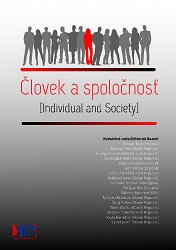Archival sources of the Hungarian Institute in Jerusalem, 1946 – 1948
Archival sources of the Hungarian Institute in Jerusalem, 1946 – 1948
Author(s): Szalay GáborSubject(s): Diplomatic history, Military history, Political history, WW II and following years (1940 - 1949), Geopolitics
Published by: SAV - Slovenská akadémia vied - Spoločenskovedný ústav SAV
Keywords: Hungarian Institute in Jerusalem; Tibor Scher; István Romhányi; Tel-Aviv; 1948;
Summary/Abstract: The aim of this article is to contribute to the presentation of the Hungarian Institute of Jerusalem by analyzing records in the Hungarian National Archives. That is the reason why this paper is based on foreign affairs ministry materials found in the Hungarian National Archives. As far as secondary literature is concerned, research work by Attila Novák and József N. Szabó is regarded as unavoidable. However, besides the aforementioned resources, a comprehensive work has not been created on the history of the Hungarian Institute in Jerusalem so far. This article is an attempt to fill this research gap. The Institute played an important role in the history of post WWII Hungarian - Israeli relations. The cold war and the bipolar world created a completely new (geopolitical) situation in CentralEastern Europe as well as in the Middle East after 1945. The victorious Soviet Union spread its influence on European territories east of the Elbe River, and due to this Soviet presence, the political, social and economic structure of these small countries – such as Hungary – located in the region were transformed in a radical way. Consequently, their foreign policy and cultural orientation naturally changed, or at least a massive shift took place. Until the middle of the 20th century, German culture had traditionally played a predominant role in Hungary. In addition, English, French and Italian influence was considered to be significant as well. Compared to them, Russian, and later Soviet cultural influence had no significant impact, but when taking foreign policy into account, the situation was completely different. Due to the geographical location of Hungary, its huge eastern neighbour, the Russian Empire and later the Soviet Union had been regarded as highly influential. In the (post-war) new world order, however, as far as determination of Hungarian foreign affairs is concerned, the country was under Soviet hegemony. Germany as a sovereign power in the West ceased to exist for decades. Moreover, Germany itself became divided by two superpowers: between the United States and the Soviet Union until the 1989 fall of the Berlin Wall, a symbol of the cold war. The Ottoman Empire that had dominated the South for almost half a millennium fell apart during the First World War. It was replaced by the Kingdom of Serbs, Croats and Slovenes and later Yugoslavia. The federation led by Tito, however, did not have any attempts expand like the Turkish did unless Tito’s ideas to create a Balkan federation is regarded as an attempt to conquer. In addition, Tito became one of the leading figures of The Non-Aligned Movement in the 1950s. Thus, he tried to keep a degree of independence from the competing superpowers of the Soviet Union and the United States. Due to its geographical distance, and because of agreements in Yalta and Potsdam, the United States retained a presence in Central-Eastern Europe, albeit-as a counter pole. Well-functioning/Fine Hungarian – Israeli relations would have been able to balance the growing foreign political and cultural hegemony of the Soviet Union after the Second World War, as ibid. However, the Middle East − where two classic Imperial powers, Great Britain and France, had taken control − became a scene of huge transformation. The British and the French gradually retreated from the region and they were replaced by the United States. At the same time the United States made attempts to spread its influence. Thus, this region became a battlefield of the super powers’ rivalry. The Hungarian Institute was established in these complicated circumstances. It existed between 1946 and 1948 and was led by Tibor Scher, the historian and hebraist. The People’s Republic of Hungary did not have any formal relations with the State of Israel until 1950 when István Romhányi was appointed to be Chargé d’Affaires of Hungary in Tel-Aviv. Although Israel – formerly known as Mandatory Palestine – had a community of about 100,000 Hungarian−speaking residents, their interests were not represented. The Institute tried to take care of them but its primary mission involved the development of Hungarian – Israeli cultural relationships. However, that mission failed because of internal and external circumstances. Namely, the first Arab-Israeli war broke out in May 1948; and the Hungarian authorities did not provide a wholehearted support for the Institute. This article aims to highlight how decisive a role the Institution could have had – if it had remained. It could have opened a gateway for Hungary during Soviet and American hegemony – even if that gate would not have been very big.
Journal: Človek a spoločnosť
- Issue Year: 24/2021
- Issue No: 3
- Page Range: 47-61
- Page Count: 15
- Language: English

